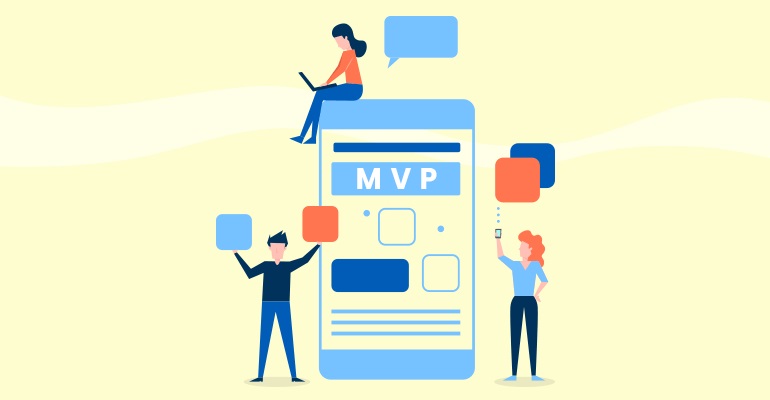
A minimal viable product includes only the essential functionality required to deliver the product efficiently and nothing more. Early adopters are more forgiving, more inclined to provide feedback, and comprehend a product concept from an early prototype or marketing information. Hence developers generally release the product to a subset of potential consumers.
This technique aims to prevent creating items that customers don’t desire while also maximising customer information with the least amount of money invested. MVPs are used in the Lean Startup approach to test business ideas and verified learning is one of the five principles of the Lean Startup process.
MVP software development is primarily determined by four factors in the MVP software development process. These primary contributing processes help to make the MVP software development process more robust, dependable, and long-lasting.
Building an MVP Software Development
Conceptualization & Ideation:
To conduct first concept approval, you must first understand a great deal about the market. It would be satisfactorily if you also had answers to the following questions throughout the ideation phase.
How will your newly designed product turn out to be a pain in the neck and fix all problems?
What makes your app stand out from the rest?
Is the produced app’s pricing range reasonable?
Market Research
To avoid huge money and time losses, you must conduct market research to determine demand and rivals, regardless of how original or exciting your idea is.
Before getting to the product creation stage, learn to know your target audience.
Before you even begin to construct an MVP software development, market research will help you discover your potential consumers,
what makes your concept unique and marketable,
what issues it may answer, and
how to make your product suit your customers’ demands.
Remember that the key to designing a successful MVP is to demonstrate the value that your product will deliver to your target audience.
Goal setting:
MVP software development aids in the avoidance of costly market research at a later time. Because understanding who you’re marketing to is crucial, but it also provides strong visual cues.
When determining your target audience, consider practically all aspects such as age, gender, job, home area, and economic status. You could also be interested in the lives and interests of your target audience.
You may utilise this information to determine the most effective communication channels and methods and create an effective marketing strategy to attract customers.
Creating a set of clear and specific measures to assess the launch’s performance.
If you’re operating on an app, you can track:
- The total number of downloads in a specific period.
- The total amount of downloads
- Score on the review and comments
- The number of time people spends using the app.
- Anything else that can assist you to figure out if your MVP is fulfilling your customers’ demands or if it needs to be tweaked.
Choosing the Most Relevant Features for the User
Remember to examine what your consumers think and feel while using your product since this will significantly impact their decision-making process.
Answer the questions that define users and their personalities, the decision-making process, the end objective, and a set of activities that users must do to achieve this goal to understand your user’s journey.
It would be best to decide which features will be included in the MVP software development. As the heart of your product, concentrate on a smaller amount that benefits the consumer.
These features must address the specific issues you discovered in your market through consumer research.
MVP software development
Prototyping should only be done if you’re confident of the viability and practicality of your concept. By creating prototypes, you’ll better understand how your product will work and how to ensure a great user experience.
Because the prototype reflects the ultimate product you want to produce, it must be user-friendly and engaging. It cannot, under any circumstances, fall short of quality requirements.
Concentrate on the key elements that will get the solution to users as quickly as feasible.
Following the publication of your prototype, you may decide which feature will be prioritised for development in the final version of the product.
Evaluating:
The appraisal of the product is part of the testing procedure. Initial testing is done by Quality Assurance engineers/testers, who try to improve the quality of the initial product, even if it hasn’t been released yet.
Feedback & Reviews:
The most crucial MVP software development process component is measuring the results.
This is the actual ordeal of your product’s feasibility, and it will define the ultimate product’s development path.
Pay close attention to what the users have to say.
Even though you can’t please every customer on the market, user input might provide you with a good notion of how to improve the features.
Digital Transformation Agency:
To attain and maintain a competitive edge, digital transformation is a strategic commitment to embrace and continually upgrade digital apps, processes, and experiences throughout your business.
- Digital Transformation Agency Examines your present systems and procedures.
- Digital Transformation Agency Gathers information from customers and stakeholders.
- Digital Transformation Agency Evaluates platforms and processes to identify risks and their effect (CMS, PIM, ERP, CRM, etc.)
